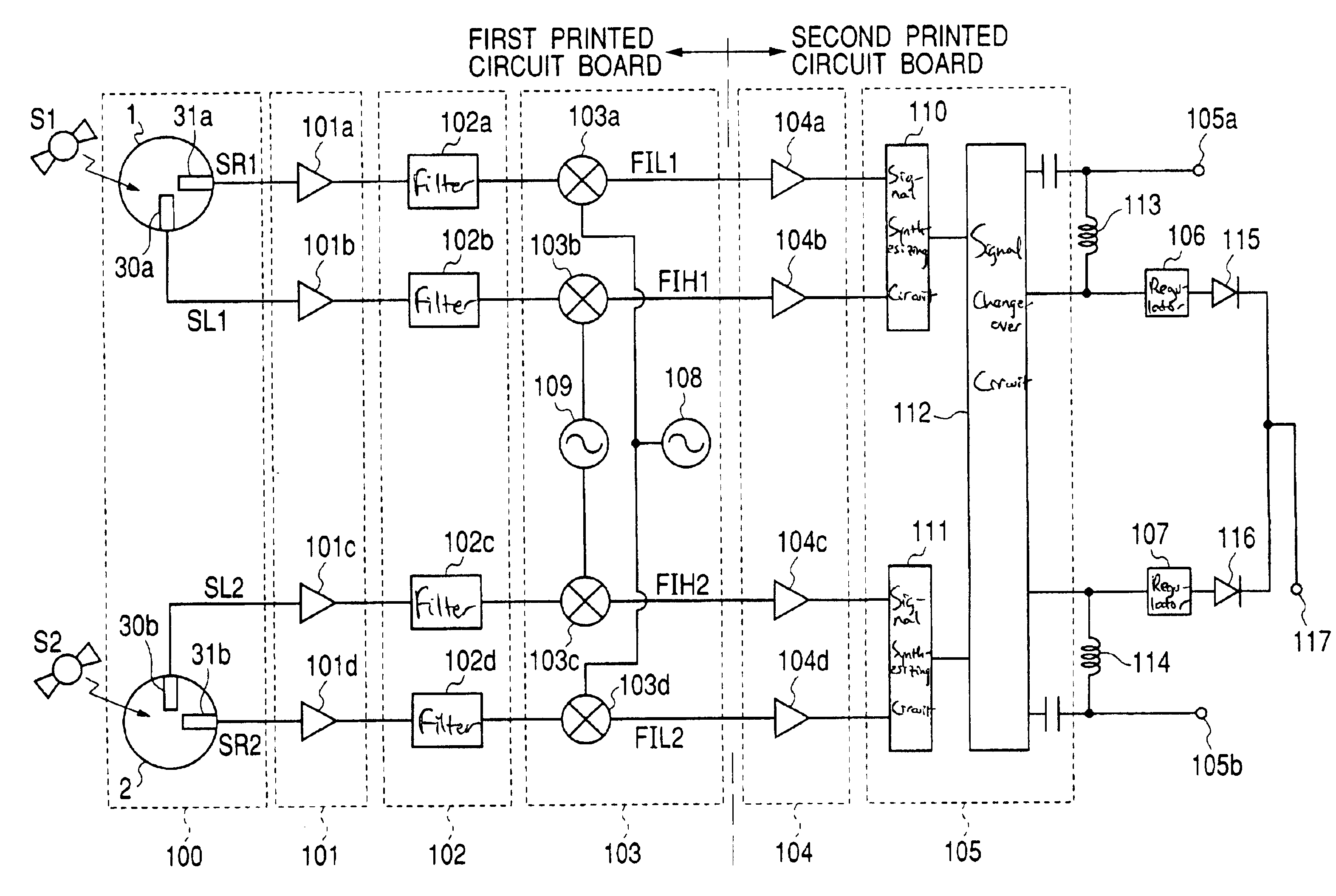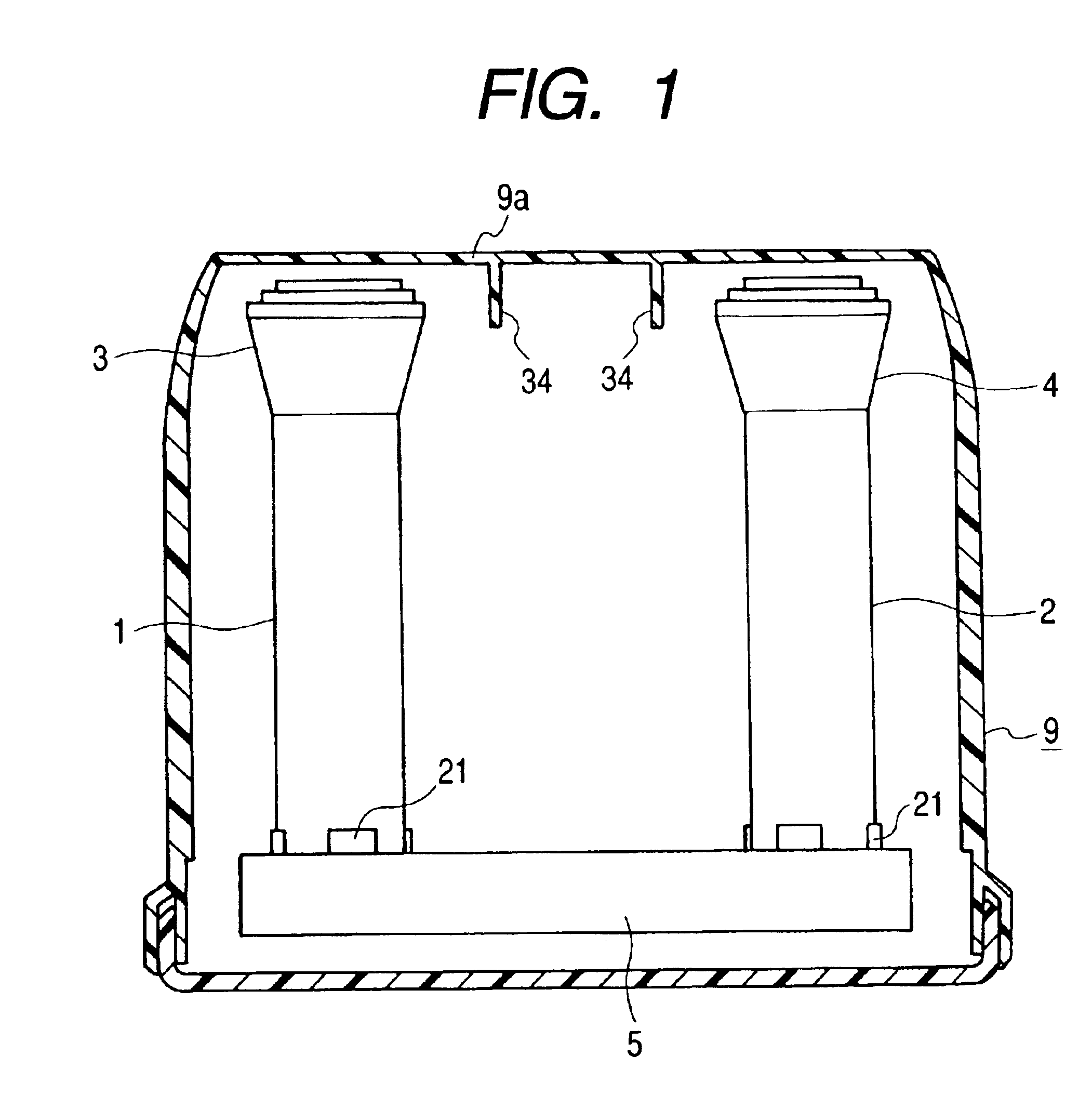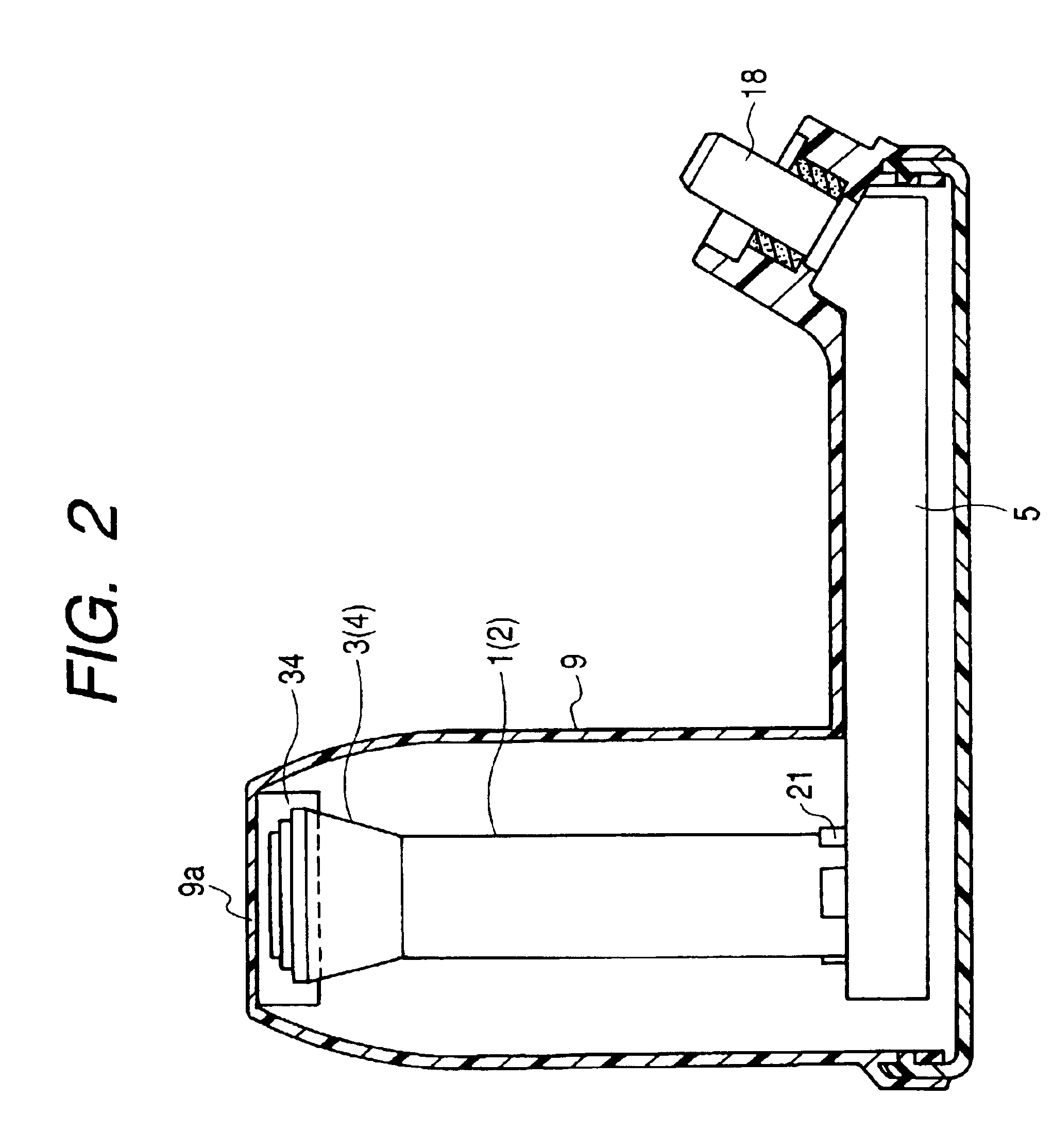Satellite broadcasting receiving converter for receiving radio waves from plurality of satellites
a technology of satellites and receivers, applied in the direction of waveguide horns, wireless communication, wireless commuication services, etc., can solve the problems of inevitably necessary to use a large-sized reflector, time-consuming and cumbersome steps for connecting coaxial cables, and increase manufacturing costs, so as to achieve the effect of reducing manufacturing costs
- Summary
- Abstract
- Description
- Claims
- Application Information
AI Technical Summary
Benefits of technology
Problems solved by technology
Method used
Image
Examples
Embodiment Construction
[0043]A preferred embodiment of the present invention is explained hereinafter in conjunction with attached drawings. In the drawings, FIG. 1 is a cross-sectional view of a satellite broadcasting receiving converter according to an embodiment of the present invention, FIG. 2 is a cross-sectional view of the satellite broadcasting receiving converter as viewed from a different direction, FIG. 3 is a perspective view of waveguides, FIG. 4 is a front view of the waveguide, FIG. 5 is a perspective view of a dielectric feeder, FIG. 6 is a front view of the dielectric feeder, FIG. 7 is an explanatory view showing the dielectric feeder in an exploded manner, FIG. 8 is an explanatory view showing a state in which the dielectric feeder is mounted on the waveguide, FIG. 9 is an explanatory view showing the difference between two dielectric feeders, FIG. 10 is a perspective view showing a shield case, a printed circuit board and a short cap in an exploded manner, FIG. 11 is a back view of the ...
PUM
 Login to View More
Login to View More Abstract
Description
Claims
Application Information
 Login to View More
Login to View More - R&D
- Intellectual Property
- Life Sciences
- Materials
- Tech Scout
- Unparalleled Data Quality
- Higher Quality Content
- 60% Fewer Hallucinations
Browse by: Latest US Patents, China's latest patents, Technical Efficacy Thesaurus, Application Domain, Technology Topic, Popular Technical Reports.
© 2025 PatSnap. All rights reserved.Legal|Privacy policy|Modern Slavery Act Transparency Statement|Sitemap|About US| Contact US: help@patsnap.com



